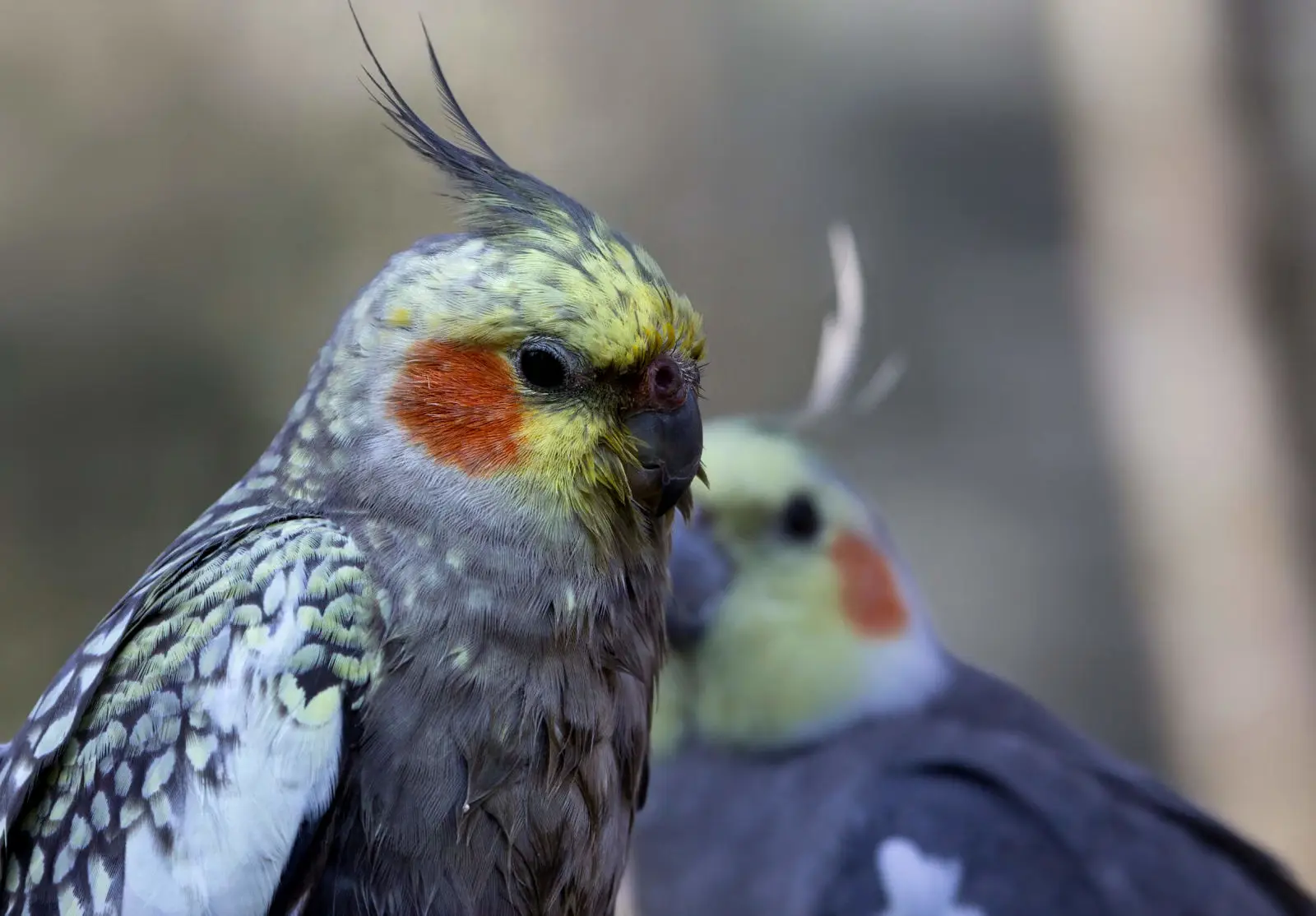
Cocktail is a little parrot, loved for their friendly nature, fancy crest, and chatty habits. Here’s a full guide to these birds, including their past, traits, and more:
History and Origin
Cocktails (Nymphicus hollandicus) are from Australia, hanging out in dry and partly dry places. They got noticed by Europeans in the late 1700s during trips to Australia. At first, they were called “quarrions” or “weiros” before everyone started calling them cockatiels.
Physical Characteristics
- Size
Cockatiels are small to medium-sized birds, typically measuring around 12-13 inches (30-33 cm) in length, including their tail. - Coloration
They come in various color mutations, with the wild-type featuring grey plumage, a yellow face, and orange cheek patches. Mutations include pied, lutino (yellow), albino, pearl, cinnamon, and more. - Crest
One of their distinctive features is their crest, which they can raise or lower depending on their mood or alertness. - Lifespan
In captivity, cockatiels can live for 15-20 years or even longer with proper care.
Behavior and Personality
- Social Behavior
Cockatiels love being around people and other birds. They become close to their owners and can form strong friendships. - Sounds They Make
Cockatiels are famous for their whistles, chirps, and copying sounds. Male cockatiels are especially good at mimicking tunes and household noises. - Playtime
These birds are playful and enjoy toys and activities that keep them busy and happy. - Smart Birds
Cockatiels are clever and can learn tricks, follow commands like stepping up, and even copy words or phrases.
Habitat and Diet
- Natural Habitat
In the wild, cockatiels live in open areas like forests, scrublands, and grassy plains in Australia. They search for seeds, grains, fruits, and plants to eat. - Captive Environment
In captivity, cockatiels do well in roomy cages with things to climb on, play with, and a mix of healthy foods. They eat a mix of good cockatiel seeds, fresh veggies, some fruits (not too much), and sometimes special treats like millet sprays. - Water
Make sure your cockatiel has fresh water for drinking and bathing, as they love to splash around to keep their feathers clean and healthy.
Breeding and Reproduction
Cockatiels stay with their partner for life and can breed all year in captivity. In the wild, they usually have specific times for breeding. Female cockatiels lay around 4-6 eggs in a nest, and both parents share the job of keeping the eggs warm and looking after the chicks after they hatch.
Cultural Significance
Cockatiels are popular pets worldwide due to their friendly nature, ease of care, and entertaining personalities. They have been featured in literature, art, and media, including movies and TV shows.
Conservation Status
While not considered endangered, the conservation status of wild cockatiels is affected by habitat loss, predation, and other environmental factors. In captivity, responsible breeding practices and conservation efforts ensure their continued presence as beloved companion birds.
Conclusion
Cockatiels are delightful and intelligent birds that bring joy and companionship to many households. Their history, colorful plumage, playful antics, and ability to form bonds with humans make them a beloved choice for bird enthusiasts and pet owners alike.


